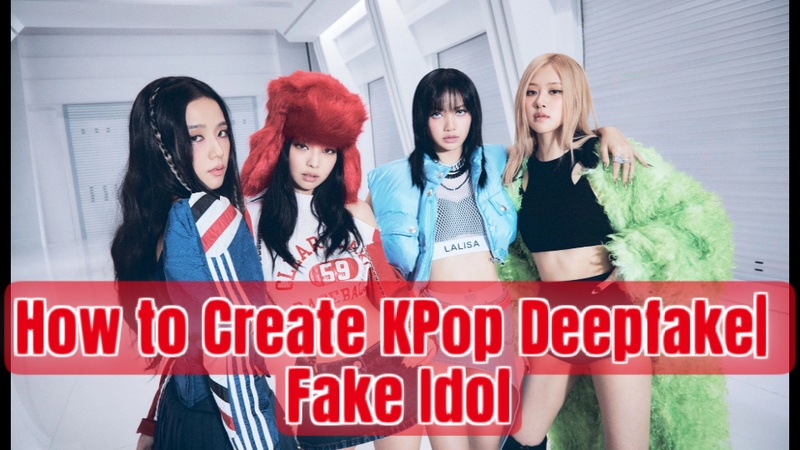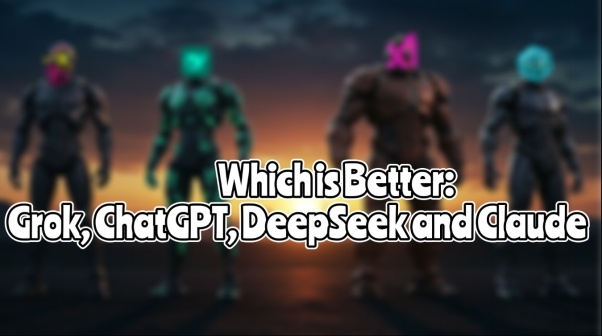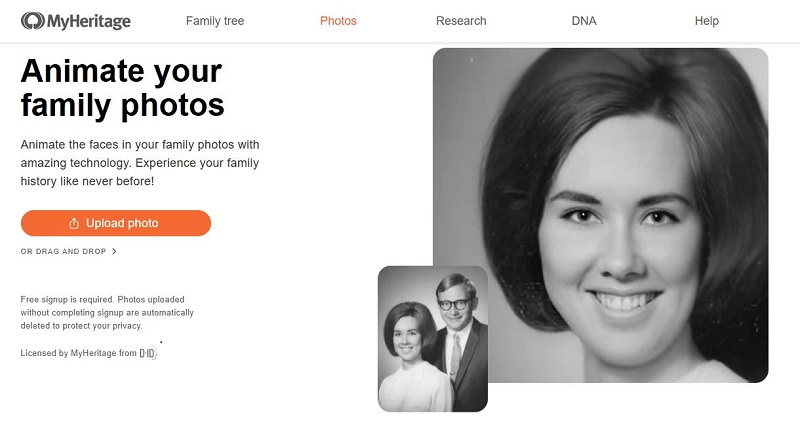Explore the rise of the Bobbi Althoff deepfake, how it went viral, the tech behind it, and the ethical concerns around AI-generated videos.
Something strange is happening online. Videos pop up, go viral, and suddenly everyone's talking. But sometimes, those videos aren't what they seem.
Faces might look familiar. Words might sound real. But it's all fake. And now, Bobbi Althoff deepfake is at the center of that storm.
You've probably seen the clips. Or at least heard the name. But what's really going on? And why does it matter? Let's take a closer look!
Part 1: Why Is "Bobbi Althoff Deepfake" Trending?
Bobbi Althoff isn't new to the spotlight. She's a podcaster, influencer, and internet personality known for her dry humor and awkward interview style. Her videos rack up millions of views. People either love her vibe or don't get it at all. But lately, it's not just her real interviews making waves.
Bobi Althoff Deepfakes, in which people are using her face and voice, have started spreading online. Some clips show her saying things she's never said. Others place her in totally fake scenarios. The AI behind it? Getting better every day. So good, in fact, that it's fooling people.

And that raises big questions. Is this real? Is she in on it? What's true anymore? Most importantly, how does this change how we see her?
We'll break it down and find out what's really going on behind all of it.
Part 2: What Is a Deepfake and How Does It Work?
Deepfakes are fake videos made to look real. They use AI to copy someone's face, voice, or both, and put them into videos they were never in. It's like digital puppetry. But way more convincing.
Behind the scenes, it's powered by neural networks. These systems study tons of images and audio. They learn how a person talks, moves, and reacts. Then, they recreate it with shocking accuracy. The result? A video that looks totally real, even when it's not.
You've probably seen deepfakes in memes or funny edits. Some are harmless, some aren't. They're even used in scams and fake news now. And that's where things get tricky.
Part 3: How to Create Bobbi Althoff Deepfake Video
Making a deepfake video today isn't hard at all. Tools like Edimakor make the whole thing simple, even for total beginners. It uses AI to create hyper-realistic deepfakes. It swaps faces, clones voices, and builds fake scenes in just minutes. Upload a video, choose a face, and let the software handle the rest. You can even create AI avatar deepfake videos.
Edimakor also comes with lip-syncing, text-to-speech, and editing features. That's why these fake clips spread so quickly. No studio needed: just a computer, an image, and a few clicks.
Reminder:
This guide is for informational purposes only and does not constitute legal advice. Before using the relevant features, please make sure to:
- Consult a qualified legal professional in your jurisdiction to evaluate any legal risks that may apply;
- Carefully read and fully understand the Edimakor Terms of Service and Edimakor Privacy Policy;
- Ensure that all generated content complies with applicable local, state, and federal laws and regulations, particularly those related to synthetic media and deepfake technologies.)
Steps to Use Edimakor to Create Deepfake Videos
If you don't have Edimator software already installed, download and install it on your desktop. Then follow the instructions given below:
Step 1: Launch the Edimakor software, go to the "Toolbox" and click "Swap Face" in the AI/video tab.
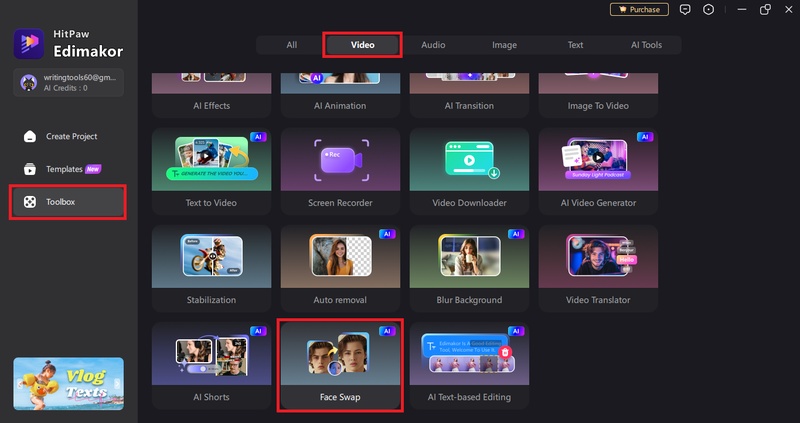
Step 2: Next, select "Video Face Swap" from the options, import your video, and click "Facial Recognition." Edimakor will start analysing your face.
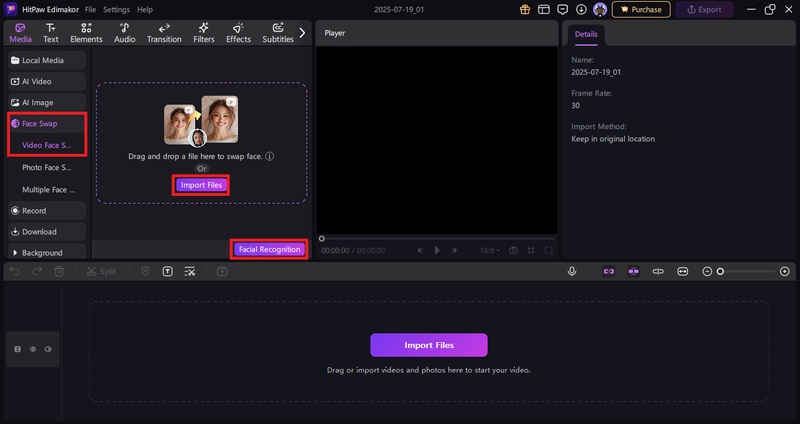
Step 3: Once the face is detected, a new window will appear. Here, you are supposed to select the face you want to swap and click "Face Swap."
(Note: In the trial accounts, you might see the Face Swap button as Free)

Step 4: Edimakor will take a few seconds and swap the selected face with your face. It automatically syncs the voices and facial movements. The face-swapped video will be saved in "My Creation."
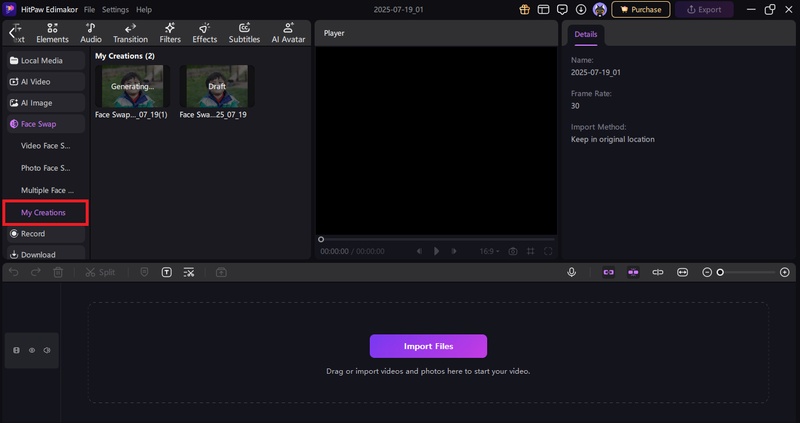
This way you can Bobbi Althoff deepfake video or any other you want in just a few minutes.
Part 4: The Rise of Bobbi Althoff Deepfake Videos
Bobbi Althoff deepfakes started popping up earlier this year. One fake clip showed her in an scene, and it spread fast. It hit millions of views in just a few hours and kept climbing. Some posts even used bait captions like "Bobbi Althoff got leaked (don't check hidden)" to trick people into watching.
So, how did people react? Mixed feelings all around. Some thought it was a joke. Others felt uncomfortable or angry. Many believed it was real. Fake tweets promising to "send the leak" flooded timelines. Even verified accounts joined in to chase clicks and likes.
The scary part? Some of these videos look incredibly real. The face, voice, and expressions are almost perfect. That's why they go viral so easily. One post can jump from TikTok to Instagram to Reddit in hours.
It shows just how fast deepfakes can spread. And how easy it is to fool the internet.
Part 5: Ethical Concerns & Digital Identity
Deepfakes aren't just about laughs or clicks. They raise real issues, especially for people in the public eye like Bobbi Althoff. When anyone can fake your face or voice, your digital identity is no longer fully yours.
Here's what's at stake:
Image rights and privacy get blurred
Celebrities have limited control over how their image is used. But deepfakes take it further. They can show someone doing or saying things they never did. That damages reputations and personal lives.
Fake or real? Most people can't tell
AI is getting better. The average viewer often can't spot a deepfake. This puts pressure on audiences to question everything they see, which isn't always easy.
Media literacy needs to catch up
People need better tools and awareness. Spotting a deepfake takes skill. Without that, false info spreads fast and feels real.
Experts are already sounding the alarm
Groups like Deeptrace and Witness have warned about the misuse of synthetic media. They say deepfakes aren't just a tech issue, they're a human one. The harm is real, even if the videos aren't.
Deepfakes aren't just digital tricks anymore. They're shaping how we see truth, and how we trust what we watch.
Conclusion
The Bobbi Althoff deepfake trend shows how fast things can spiral online. One fake video goes up. Millions watch it, and suddenly, no one’s sure what's real anymore. Deepfakes aren't just clever edits; they mess with how we see people and how we trust content. Tools like Edimakor make it easy to create this kind of stuff. That's the fun part. But it also brings up real concerns about privacy, identity, and media trust.
Want to try creating AI videos yourself? Download Edimakor and explore its deepfake features today.
Leave a Comment
Create your review for HitPaw articles


